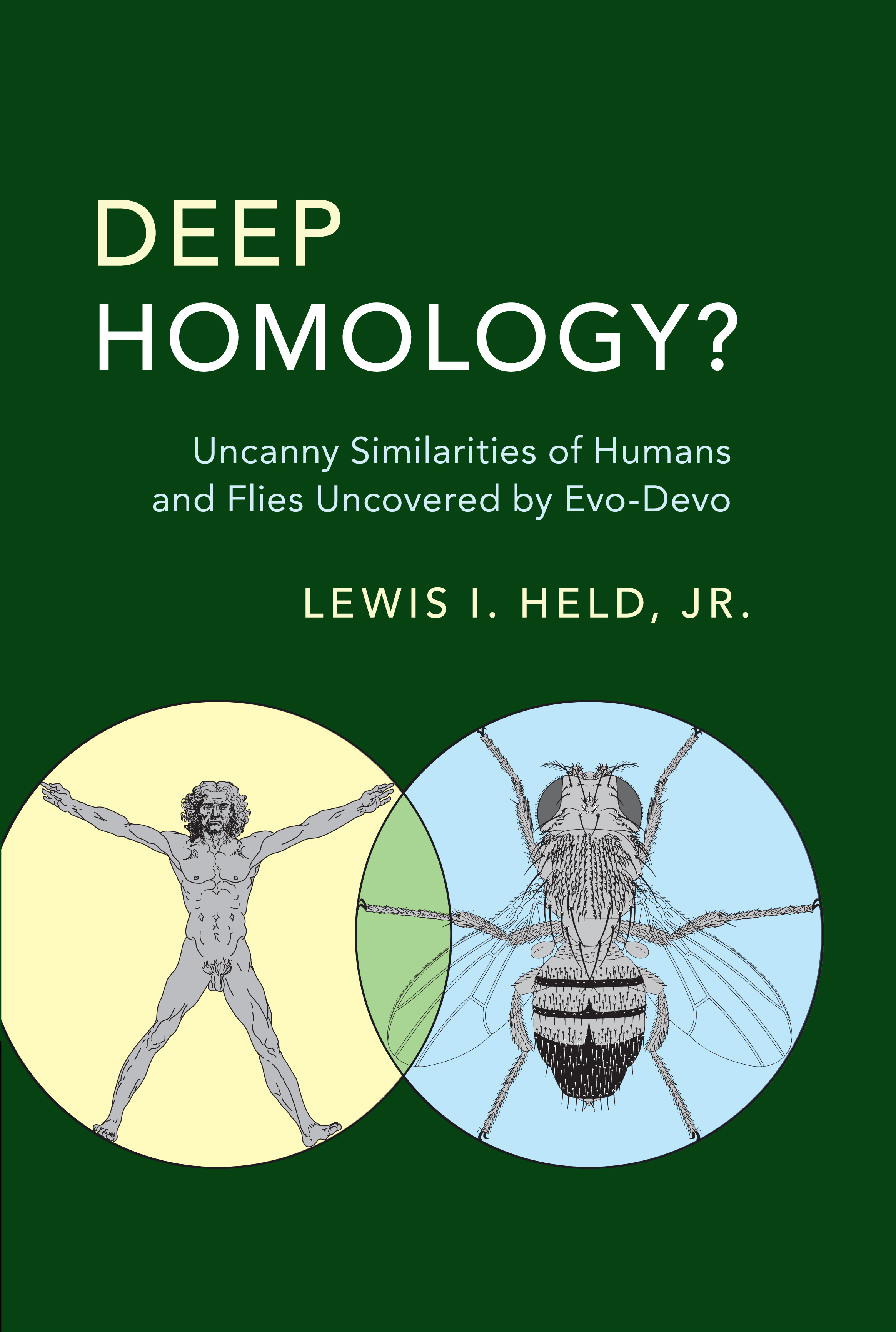

Deep Homology?
  |
Deep Homology? |
 What follows when you select the 'next page' arrow  (upper left on each page) are some of the uncanny homologies that exist between humans and fruit flies. All 18 figures are excerpted from the new book Deep Homology? published by Cambridge University Press, January, 2017. (upper left on each page) are some of the uncanny homologies that exist between humans and fruit flies. All 18 figures are excerpted from the new book Deep Homology? published by Cambridge University Press, January, 2017. The field of evo-devo (evolutionary developmental biology) has recently been solving age-old mysteries of animal evolution by providing genetic explanations. Key concepts from evo-devo are defined in the glossary, included in excerpts from Held's book, How the Snake Lost Its Legs. Use the arrows (or the index, below) to move forward or back among the slides. Humans versus flies. Humans and fruit flies look nothing alike, but they construct their anatomies using remarkably similar genetic circuitry. Much of that circuitry was inherited from a common ancestor, which lived ~600 million years ago. The greater the intricacy of the shared circuitry, the stronger the case for deep homology, versus alternative explanations (parallel co-option or convergent evolution). The purpose of the "compare and contrast" exercise presented here is two-fold: (1) to assess the extent to which humans and flies use the same circuits, and (2) to survey as many animal phyla as possible to determine how widely the shared mechanisms have been conserved throughout animal evolution. Deep Homology? Uncanny Similarities of Humans and Flies Uncovered by Evo-Devo Reprinted with permission, © Cambridge University Press Figure legends are abbreviated. References have been omitted for clarity. |
|
Introduction: cover image Body axes: figure 2 | figure 3 | figure 4 | figure 5 | figure 6 Nervous system: figure 7 | figure 8 Vision: figure 9 | figure 10 | figure 11 | figure 12 | figure 13 Touch and hearing: figure 14 | figure 15 Smell and taste: figure 16 Limbs: figure 17 Epilogue: figure 18 The Interactive Fly resides on the web server of the Society for Developmental Biology. |